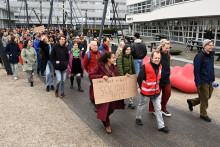The project was started by Martin Stienstra and Rainer Harms from the University of Twente and it has involved an extensive research conducted in 20 countries. For Martin Stienstra, whose own research focuses on international entrepreneurship, the EPICC project represents an important part of his PhD work. He explains more about this large, internationally oriented project.
What is the EPICC project?
´The goal of EPICC is to determine how local culture affects entrepreneurs and their businesses; how our cultural perceptions influence the decisions and activities that lead from an idea to an existing enterprise.´
How do you collect the research data?
´Collecting the data from all over the world has been the task of our students, who do so within their graduating projects. We use the so called ´think aloud method´ - students interview entrepreneurs and ask them how they would solve different business problems related to opening a coffee corner, for example. Our students only listen and can merely encourage the entrepreneurs to speak as long as possible. Afterwards they transcribe the interview and we analyze the data together, trying to determine if different entrepreneurs follow the same patterns. We try to pick young student entrepreneurs with different educational background for the research, so the education doesn´t outweigh the importance of cultural influence.´
How many people have been involved in the research?
´We have had 24 students working on it in 20 different countries – everywhere from Europe, to the North and Latin America, Southeast Asia and Australia. All together, UT students have interviewed 527 student entrepreneurs. Rainer Harms and I are the main coordinators of the project for the UT and we have cooperated with several other universities.´
What are the preliminary results of the research?
´So far we can see indications that culture has influence on the entrepreneurial processes. We see opposing patterns in countries with vastly different cultures. Differences between the USA and Europe, for instance, are not as big considering the cultures are still relatively similar. However, we still need to carefully analyze all the data – and there is a lot of it - in order to draw final conclusions.´
How can the results of this project be used?
´Perhaps it will show that things that are taken for granted should be reassessed. Western concept doesn´t necessarily always work and that should be represented in







